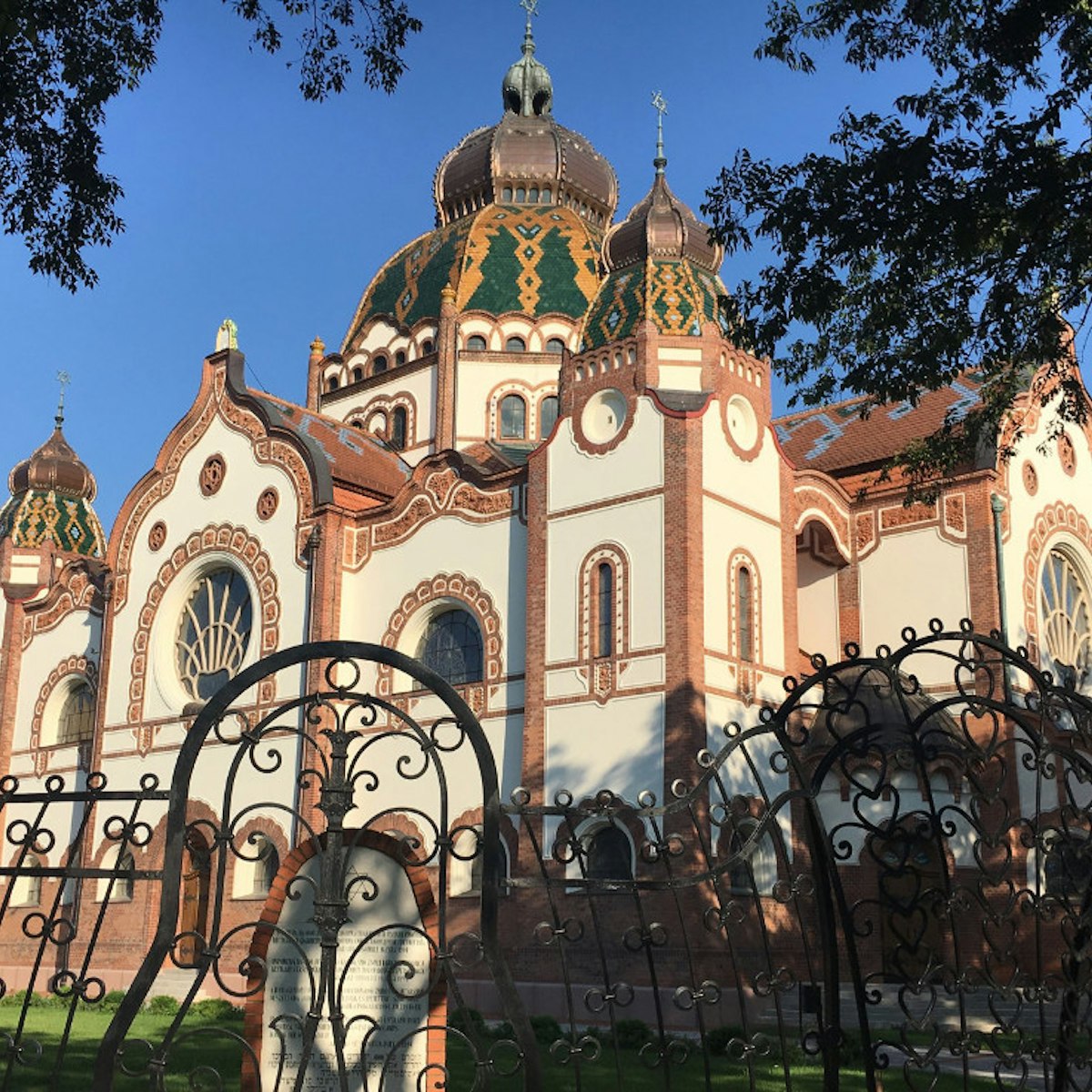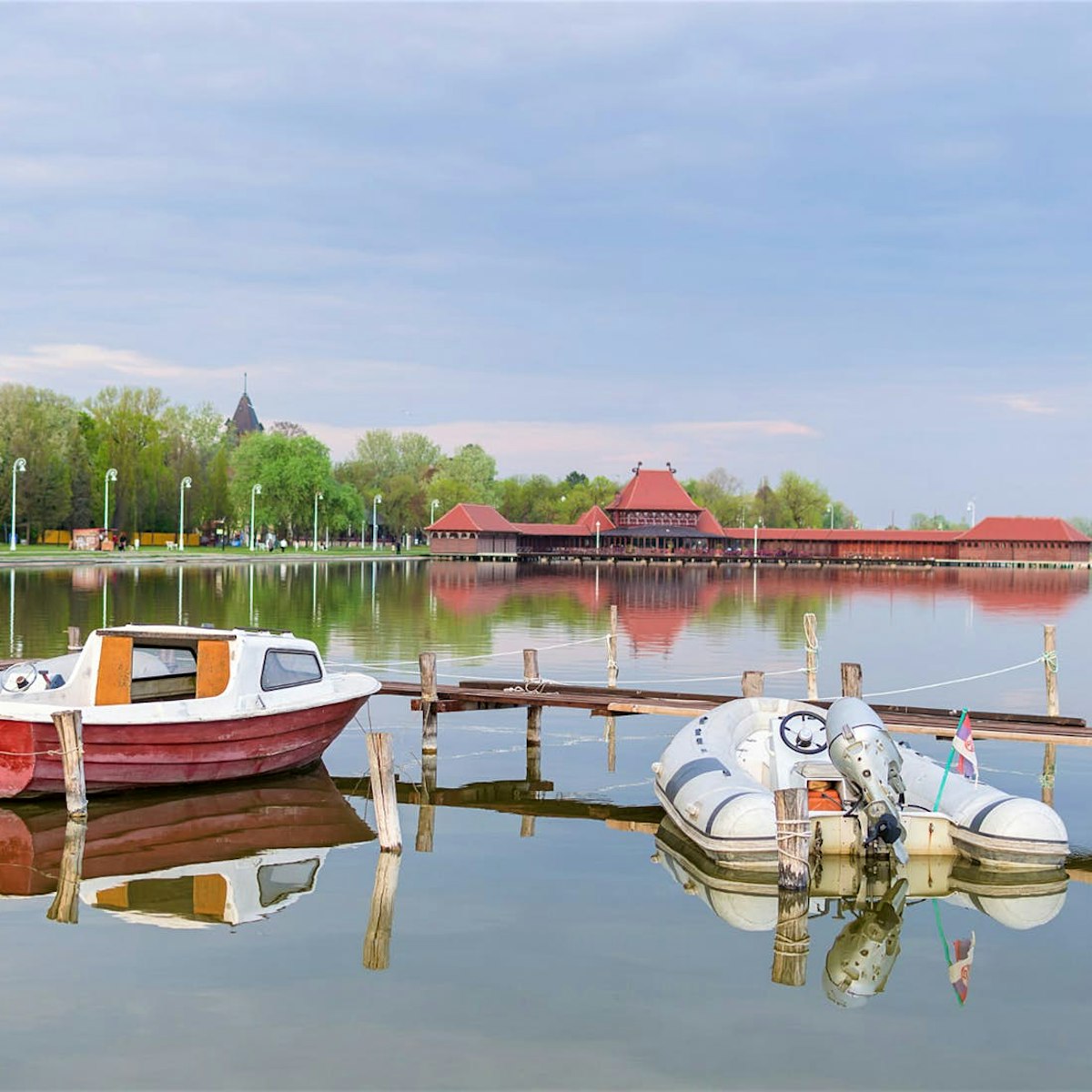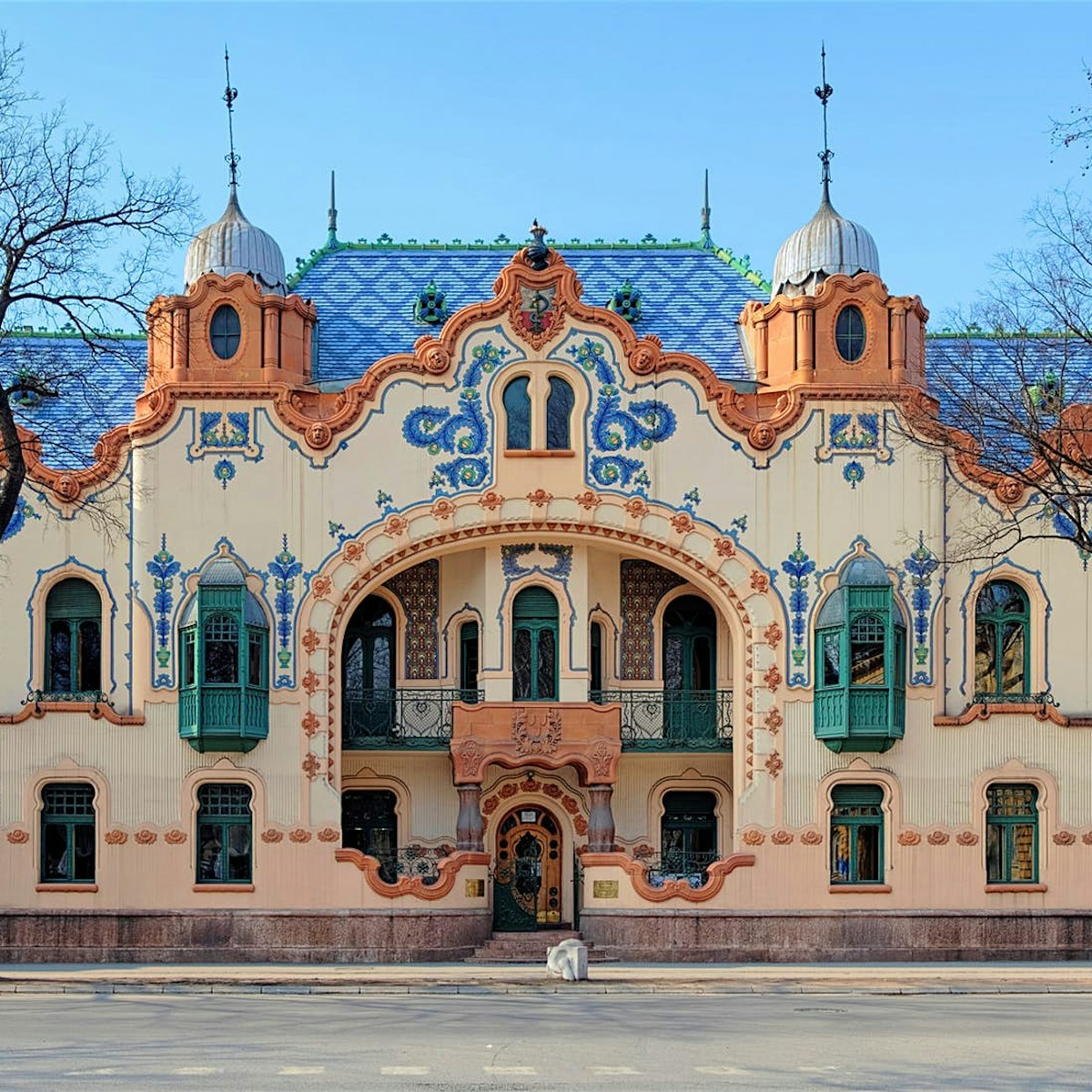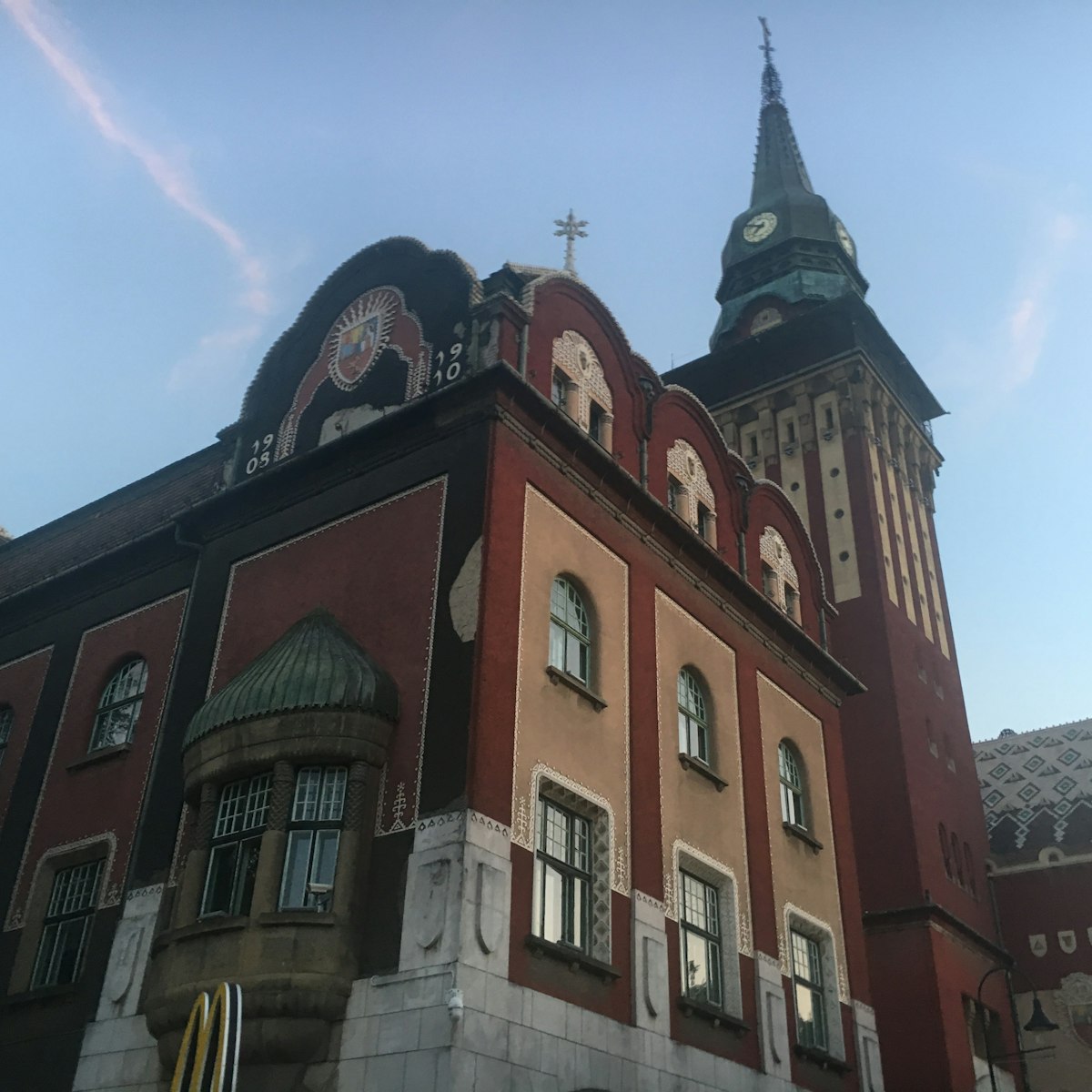The recently renovated art nouveau New Synagogue, designed by Lipót Baumhorn in 1903, is the most beautiful Jewish house of worship in Hungary, if not the world. It is still in use, though the community has dwindled from 8000 before WWII to about 500 people today. Dominating the enormous blue-and-gold interior is the cupola, decorated with stars and flowers (representing infinity and faith) and appearing to float heavenward.
Other notable features inside include the tabernacle of carved acacia wood, the metal fittings and the stained glass by Miksa Róth.




